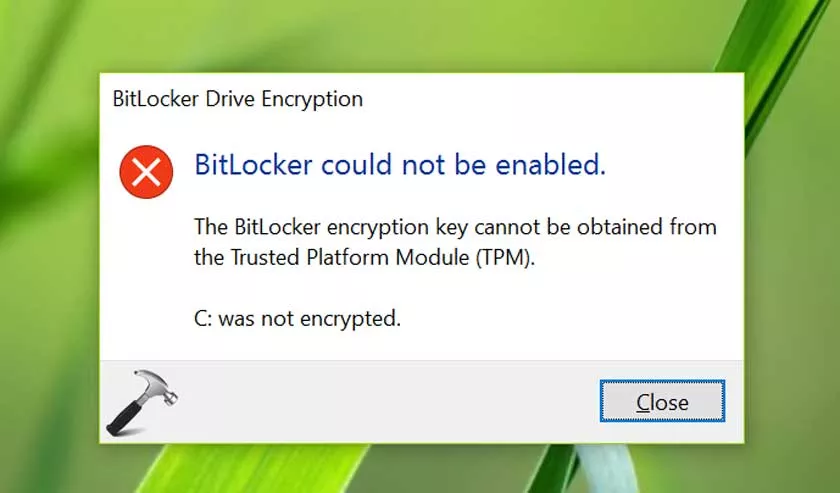Each time you enable BitLocker on the operating system drive and your system is equipped. With the Trusted Platform Module (TPM), you can set your BitLocker PIN password.
We all know that a PIN provides better security than a regular password. In this article, we will talk about how to fix an error that BitLocker cannot fix. Let’s get started!

However, if there are some issues with the TPM, then BitLocker disk encryption would not work properly. Under this type of condition, this error appears. When you try to activate BitLocker on your computer, theWindowsoperating system drive:
BitLocker could not be enabled.
The BitLocker encryption key cannot be retrieved from the Trusted Platform Module (TPM).
C: Not encrypted.
Reasons for the error
Well, these factors can cause this problem in your system, check out:
- IfUEFIand disable safe boot.
- Install bothTPM 2.0 and shut downUEFIplussafe boot.
- TPMis out of date and needs an update.
- The BIOSis outdated and also requires an update.
- The disk isMBRpartition style and requiresGPTconversion.
If you are also facing this problem, here is how you can fix it:
How to Fix BitLocker Enable Error
General suggestions
You can try the suggestions below and see if they can help you:
- You can try disabling BitLocker TPM.
- Temporarily turn offBIOS settings inTPMand try activatingBitLockerlater.
- If you still want to go toTPM, then update theBIOS TPM onyour system. If there really is an update.
- Make sure you have the latestWindows updatesinstalled as well.
If you still have a problem, go to2. FIX.
Advanced method BitLocker could not be enabled
Note:We recommend that you create a System Restore Point and then back up your data before attempting the steps below.
- First, press Windows+ Xand chooseDisk Management.
- Now, inDisk Management, right-click on your operating system disk (not partition or volume) and chooseProperties. Now on the property page, change thevolumetab and check thepartition style.
And if it says Master Boot Record ( MBR ), then we need to convert the disk to the Partition Table GUID ( GPT ) really. If the disk already has GPT, no conversion is required, then you can go straight to step 4 below as well.
- If your drive isMBR,then you can alsouse the MBR2GPT tool available in Windows 10V1703or later.GPT toconvert your disk without even losing your data.
- Then open thecommand for Administrative Commandand type
mbr2gpt /convert /allowFullOSand press theEnter key. - When theMBRtoGPTconversion is finished, now reboot the system and press theF10orF12key. (You can also confirm the device manufacturer key) over and over again. To access the temporary launch menu. ChooseChange Boot Mode Settingsas well.
Further | BitLocker could not be enabled
* This step may be different depending on your device. The goal here is to enable UEFI boot mode in safe boot mode.
- Now you just have to change the boot mode toUEFI boot mode, safe boot ON. Save all these settings and restart the machine.
- Once logged in, press Windows+ R toopenRun, type,
tpm.mscand tapOK toopen theTPM Management snap-in. - Now in theTPM Management snap-in window, underActions, just click thePrepare TPMoption (see screenshot below). If you need toPrepare the TPMoption is colored gray, then you need to make sure theTPMisBIOS enabled.
- Try enabling theBitLockeroperating system drive to work flawlessly now and again.
Conclusion
Okay, that was all the people! I hope you enjoyed this helpful “BitLocker Could Not Enable” article. Give us your feedback. Also, if you have any queries and issues related to this article.
